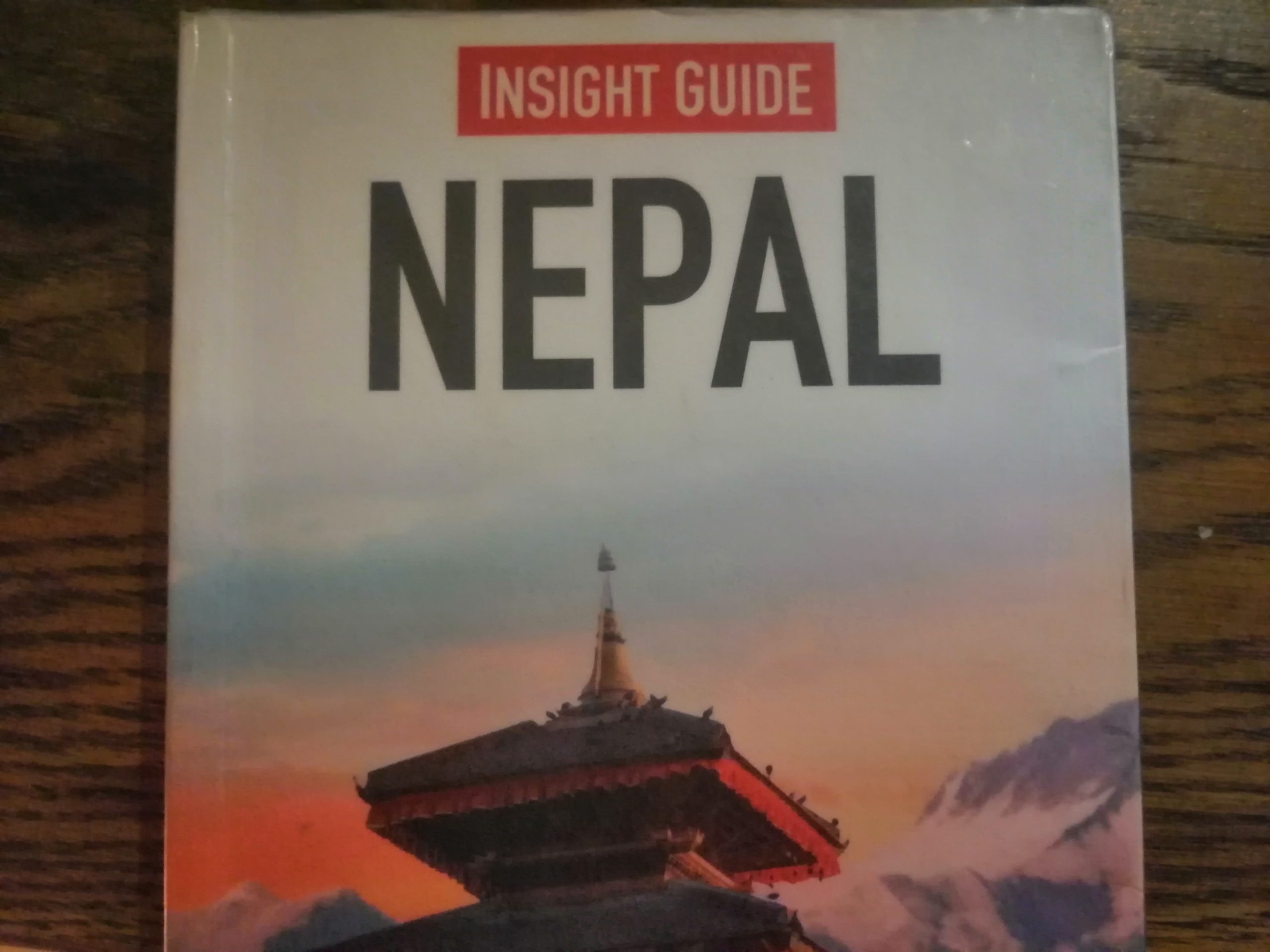During my studies, tourism & culture, I like to reflect on my own travel behaviour. For one of the assignments I decided to analyse the travel guide to Nepal by Insight Guides. I have used this travel guide in preparing for my own trip to Nepal, and through this analysis I wish to reflect on my own tourist gaze and the influence and purpose of the travel guide’s imagery. The reason for me to choose ‘Insight Guide’ as travel guide was based on their relative extensive focus on history, people and culture before ‘taking you travelling through the country’. In an attempt to be an educated ‘traveller’ instead of an uncaring tourist, I made sure to read all these chapters before setting foot in the country. My analysis of the guide however, will not focus on the background information, but on the presentation of the place of my arrival: Kathmandu.
Throughout the whole guide the images seem to be used more as an additional insight in the country rather than supporting the text itself. Every image is accompanied by a short description of what is presented as a sort of extra education to the picture. The pictures in the Kathmandu piece, mostly show locals who seem unaware of the picture being taken (9/18), then there are a few locals who pose for the photo (3/18), several pictures just contain objects or buildings (5/18), and one photo shows tourist in the ‘backpacker’ area Thamel. This could indicate that the target group are those who, like me, identify with traveller instead of tourist and tent to focus on exploring local life rather than luxury holiday resorts in a destination. However according to Jenkins (2003) backpacker travel is often promoted through the use of groups images and fun activities. The Insight Guides do provide the information for these activities but tend to stay focussed on local culture throughout the guide rather than promoting a certain backpacker culture.

Jenkins also talks about the circle of representation which describes how every photographer takes part in the process of creating and maintaining images, stereotypes etc. However, she also argues for the spiral of representation where these images are constantly transforming and adjusting through the massive circulation of photographs. Urry (1990) introduced the tourist gaze arguing that tourist look to their destination through a certain set of images or assumptions created through, for example, tourist guides or perhaps social media. In a way one is shaped to focus or see certain things through existing media and other influences. The available media today is almost unlimited which could be seen to either enlarge our gaze or increase focus on certain things in this flood of visual images.

Looking at my own behaviour and produced photos I can see the similarities to those in the travel guide, as is shown in the pictures below. Whether this has to do with the tourist gaze or because they are ‘authentic’ representations of Kathmandu is unclear. However, I was shocked when I discovered an identical photograph to one in the guide, which I didn’t realise was identical until this assignment. From my perspective, which is also formed through infinite influences from others, I did present Kathmandu in my photos as I remember and felt at the time. However, the selected images in the guidebook do present Kathmandu to those who probably have not yet been there. It plays a part in identity formation of both the local resident in Kathmandu as in the eyes of the tourist and the tourist-identity of those who might be visiting.

My memories of Nepal are connected to my photographs, which I see as truthful. This means that the guide also shows, in my experience, true images, guiding and presenting the city as it is, not polished or clean or crawled with tourists, rather dusty with colour and Nepali people roaming the streets. I have a hard time being more critical, because I feel like my assumptions and experiences are confirmed through the guide and actual Kathmandu. Would this mean that the circle of representation in this aspect is a ‘complete’ circle, where image and reality are constantly confirming, creating and maintaining each other? Perhaps someday, I will look at Kathmandu with a different gaze, but for now I would say that Insight Guides do provide a starting point of gazing at a new destination.


Comments are closed